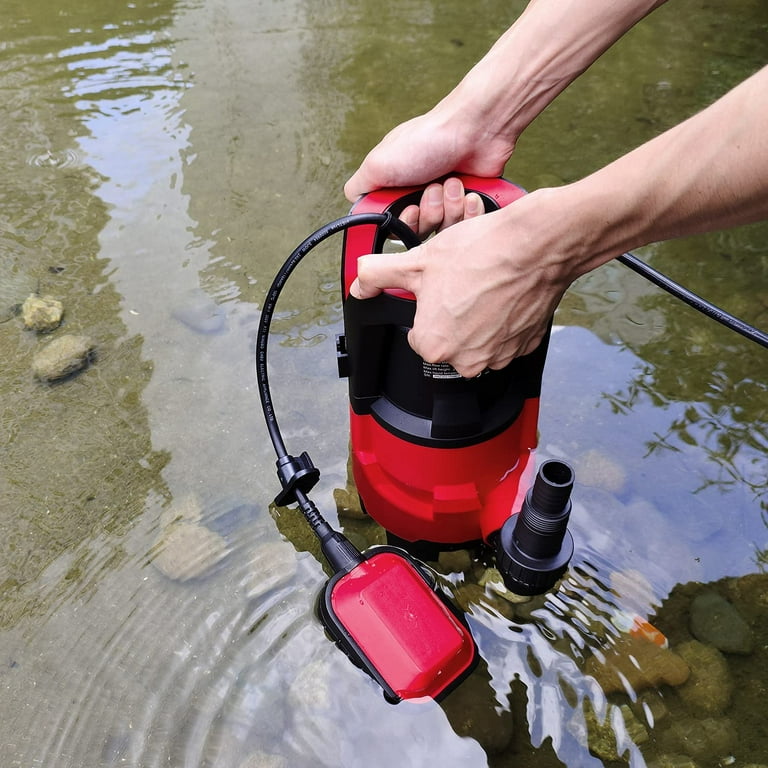Quick Methods for Servicing a Sump Pump
Quick Methods for Servicing a Sump Pump
Blog Article
We've stumbled upon this great article on How to Care for Your Sump Pump directly below on the net and think it made good sense to talk about it with you in this article.

Sump pumps are important components in numerous homes, especially in areas prone to flooding or too much wetness. They help avoid water damage by successfully getting rid of excess water from cellars or crawl spaces. However, like any other appliance, sump pumps call for regular upkeep to ensure they work effectively when required the most. Cleaning your sump pump is an essential part of its maintenance, and comprehending exactly how to do it correctly can save you from expensive repair services and potential catastrophes.
Introduction
Maintaining a clean sump pump is crucial for its proper functioning and longevity. Ignoring this essential job can lead to blockages, malfunctions, and inevitably, water damages to your home. For that reason, learning exactly how to cleanse a sump pump is important for property owners who count on these tools to maintain their cellars completely dry and safeguarded.
Comprehending the Sump Pump
Before diving into the cleaning process, it's necessary to have a basic understanding of just how a sump pump functions. Commonly mounted in a pit or basin listed below the basement flooring, a sump pump contains several crucial components, including a pump, a float switch, and a discharge pipeline. When water builds up in the pit, the float switch turns on the pump, which then pumps the water out through the discharge pipeline, away from the structure's foundation.
Signs of a Dirty Sump Pump
Recognizing when your sump pump requires cleaning is vital for stopping possible breakdowns. Some typical indicators that suggest an unclean sump pump include strange noises throughout operation, minimized water circulation, and noticeable debris in the pit. If you discover any of these signs and symptoms, it's necessary to cleanse your sump pump quickly to avoid any type of further problems.
Preparing for Cleansing
Prior to you begin cleaning your sump pump, it's essential to take some safety and security preventative measures. Beginning by shutting off the power to the pump to avoid any electric crashes. Furthermore, wear suitable safety gear, such as handwear covers and goggles, to safeguard on your own from dust, particles, and potential microorganisms.
Detailed Guide to Cleaning a Sump Pump
Shutting Off the Power
Begin by separating the power supply to the sump pump to prevent any crashes while cleaning.
Removing Particles and Dirt
Utilize a container or a scoop to remove any type of noticeable debris, dust, or debris from the sump pit. Dispose of the debris correctly to avoid it from clogging the pump or the discharge pipe.
Cleaning up the Pump and Float Change
As soon as the pit is free from particles, very carefully remove the pump from the pit. Inspect the pump and the float switch for any kind of indicators of damages or wear. Utilize a soft brush or fabric to clean the surfaces and eliminate any kind of gathered grime.
Purging the System
After cleaning the pump and float button, flush the sump pit with tidy water to get rid of any type of remaining dust or debris. This will help make certain that the pump operates efficiently and effectively.
Looking For Proper Performance
Prior to re-installing the pump, execute a fast examination to guarantee that the float button turns on the pump properly. Put some water right into the sump pit and observe the pump's procedure. If whatever is working correctly, you can rebuild the pump and reconnect the power supply.
Maintenance Tips to Keep Your Sump Pump Clean
In addition to periodic cleansing, there are a number of maintenance pointers you can follow to maintain your sump pump in optimum condition:
Final thought
Cleaning your sump pump is an important element of its maintenance and guarantees that it operates efficiently when you need it the most. By adhering to the actions outlined in this guide and including normal maintenance right into your routine, you can expand the life expectancy of your sump pump and safeguard your home from water damage.
6 STEPS ON HOW TO CLEAN A SUMP PUMP PROPERLY
UNDERSTANDING SUMP PUMPS
Your sump pump plays a crucial role in protecting your home by managing and removing excess water. It primarily functions as a “shield”, guarding your basement against the damaging effects of water accumulation. The pump is housed in a sump pit in the lowest part of your basement, and its job is to pump out any water that collects there.
During heavy rainfalls or when snow melts rapidly, water can infiltrate your basement, posing potential risks like flooding, structural damage, and harmful mold growth. Here, the sump pump springs into action, pumping out the intruding water and directing it away from your home.
SAFETY FIRST
Before cleaning, remember to prioritize safety. Disconnect the sump pump from the power source to prevent any accidental electric shocks. Also, wear sturdy gloves to protect your hands from any sharp or dirty components within the pump.
REMOVE THE SUMP PUMP
After ensuring your safety, the next step is to remove the sump pump from its pit. Doing this might require careful maneuvering as you don’t want to damage any pump components. Once removed, clean the sump pit to remove any accumulated debris or sludge.
INSPECT THE PUMP
Inspect the pump for any visible signs of wear or damage. Check the power cord, float switch, and impeller housing. If any components look worn out or damaged, consider replacing them to ensure optimal performance.
CLEAN THE PUMP
Thoroughly clean the pump with warm, soapy water. Make sure to rid it of any dirt, gravel, or other debris that might impede its performance. You can use a toothbrush to clean the small, hard-to-reach parts of the pump.
REINSTALL THE SUMP PUMP
Reinstall the pump into the sump pit Make sure it’s positioned correctly to remove the water effectively Once it’s back in place, reconnect it to the power source TEST THE PUMP
Finally, pour some water into the pit to ensure the pump works correctly. It should start automatically and begin pumping out the water; if it doesn’t, check the power source and the positioning of the pump.
Remember, while cleaning your sump pump is an essential part of home maintenance, hiring a professional plumber for a thorough inspection and cleaning at least once a year is also important. This will ensure that your pump is in optimal condition, ready to protect your home from potential water damage.
BEST PRACTICES FOR CLEANING SUMP PUMP DISCHARGE PIPES
Regular Inspection: Regularly inspect your discharge pipes, especially during heavy rainfall or snowmelt periods. Look for any signs of blockage or damage. Early detection of problems can prevent serious issues down the line. Periodic Cleaning: Over time, sediment and debris can accumulate in the discharge pipes, impeding the flow of water. Regular cleaning helps keep the pipes clear and functioning efficiently. You can use a high-pressure water jet to effectively clean the pipes. Insulation During Winter: In colder climates, discharge pipes can freeze, blocking the outflow of water. Protect your discharge pipes from freezing temperatures by insulating them with foam pipe insulation. This will ensure the sump pump can continue to discharge water even in freezing conditions. Proper Positioning: The discharge pipe should be positioned to direct water away from your home’s foundation. Improper positioning can lead to water seeping back into the basement. Ensure the pipe is long enough and angled correctly. Installation of a Check Valve: A check valve prevents water from flowing back into your sump pit after the pump has pushed it out. Installing a check valve helps maintain the efficiency of your sump pump and reduces the risk of flooding. Minimize Pipe Turns: Every curve or turn in the discharge pipe can decrease the efficiency of water flow. By minimizing turns and bends in your discharge pipe, you can increase the efficiency of your sump pump. https://www.fullspeedplumbing.com/how-to-clean-a-sump-pump-properly9999/

I hope you enjoyed reading our article on How To Effectively Clean A Sump Pump. Thanks for spending some time to read our post. Are you aware of another individual who is in the market for the niche? Feel free to promote it. I value your readership.
Call Today Report this page